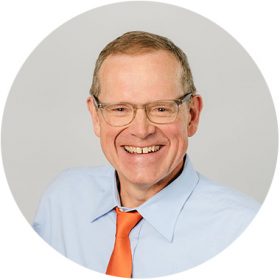Yogi Berra passed away this September at the age of 90. Yogi was a Major League Baseball player and manager who won 13 World Series rings during his Hall of Fame career. It was his way with words, however, which made him the beloved public figure he became. So called “Yogi-isms” have been described as distilled bits of wisdom which get to the truth in a hurry. His memorable phrases transcended baseball—even sports—and were relevant for all people, including investors. Here are some of our favorites and how they relate to investing:
“The future ain’t what it used to be.”
Throughout history, one of the most common investment mistakes has been to expect the market to continue in whichever direction it was most recently headed. Investors are emotional beings who naturally get excited and chase positive returns, buying high in the process. Conversely, poor performance leads to panic and selling low. These behaviors are so common and so detrimental to investors that regulators require all investment advertisements to include the warning, past performance is no guarantee of future results. Investors can benefit greatly from remembering Yogi’s simple observation and not watching the rear-view mirror when moving forward.
“If you don’t know where you are going, you’ll end up someplace else.”
Yogi understood the importance of a plan and how off-track you could become without one. Investors never plan to fail, but they often fail to plan. An investment plan is simply a map to follow toward reaching long-term financial goals. It should describe how to invest under all conditions, since the time it takes to achieve long-term goals ensures encountering bad as well as good markets. In other words, identify where you want to go in advance and plan for the unexpected obstacles you will inevitably face along the way.
“It’s tough to make predictions, especially about the future.”
The future is by definition unknowable in advance. To invest in a manner which makes future success dependent on anyone’s ability to accurately and consistently guess what happens next in the market is begging for disappointment. Yogi knew predictions are an “un-prophet-able” enterprise.
“You can observe a lot by just watching.”
There are no guarantees in investing, but there is plenty of evidence pointing to what has worked best and most consistently under the broadest range of market conditions. Academic researchers have studied market history extensively. Their observations have yielded a compelling body of evidence as well as several Nobel Prizes. These lessons, which are available to anyone willing to take the time, are priceless since they can be learned without having money at risk (the hard way).
“When you come to a fork in the road, take it.”
The investment interpretation of this expression—Diversify. A fork in the road is a metaphor for choice. When presented with an opportunity to invest in two stocks, rather than choosing between them, why not invest a little in both? On average, diversified investment portfolios produce better long-term returns with less risk (volatility) compared to concentrated portfolios. Diversification has been called the closest thing to a free lunch in investing. Consequently, Yogi would probably have recommended taking any other utensil you happen to encounter in the road, as well.
